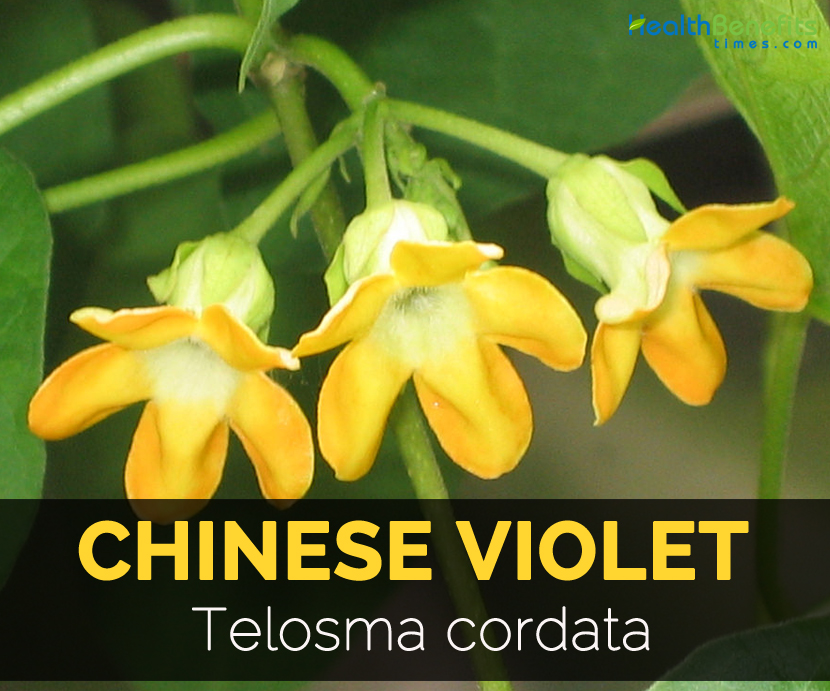| Chinese violet Quick Facts | |
|---|---|
| Name: | Chinese violet |
| Scientific Name: | Telosma cordata |
| Origin | The plant is a native to India, Burma, Indochina and South China. |
| Colors | Green |
| Shapes | Round with pointy ends |
Plant
The plant is a small and perennial climber that grows to 10 meters long with yellowish green, much-branched stem which is pubescent when young that becomes pale grey and glabrescent. Leaves are found on 1.5 to 5 cm long petioles. Leaf lamina is ovate measuring 6 to 11 cm long having base deeply cordate with narrow sinus. Flowers are 15 to 30 flowered and fragrant especially at night. Bract is linear and caducous. Sepals are puberulent on the outside and oblong-lanceolate. It has greenish to yellow to pale yellow corolla. Tube measures 6 to 10 × 4 to 6 mm, with ciliate, oblong-linear lobes. Follicles are lanceolate, glabrous, measuring 6 to 12 × 2 to 3.5 cm and are obtusely 4-angled. Seeds are broadly ovate, flat, 1 × 1 cm and margin membranous bearing 3 to 4 cm long silky coma. It is reproduced by seedling or cutting.
Leaf
Leaves are heart-shaped which grows in pairs. Each leaf measures 4-7.5 cm wide and 6–11 cm long with underside smooth. The thickness of leaf is very small and veins could be seen clearly. The stem measures about 1.2 to 2 cm long.
Flower
Flowers are greenish to yellow having a strong fragrance especially in the evening. It has 1.5 cm diameter with 5 petals and 5 stamens which is affiliated to each other and to pistils. The flower blooms from March to May.
Fruit
The fruit is smooth, green and round having pointy ends. The inside part of the fruit contains large amount of flat seeds having white fluff which attached to the end.
Traditional uses
- Medicinally oil and flowers are used for treating conjunctivitis.
- It is used as an antidote to poison and also reduces fatigue.
- It provides relief from backbone aches and also lowers hematuria.
Precautions
- Avoid by allergic people.
- Consult the health practitioner before treating health conditions.
How to Eat
- Unopened flowers and young leaves are consumed as vegetables in China, Vietnam, Thailand, Laos and Kampuchea.
- It is cooked in soups or is stir fried with eggs and meat.
- In Java, tuberous roots are consumed as sweetmeat.
- The oil are used for cooking purposes.
- Flower buds are used stir-fried or boiled in broth in Vietnamese cuisine, Southern Chinese cuisine and Northern Thai cuisine.
References:
https://www.itis.gov/servlet/SingleRpt/SingleRpt?search_topic=TSN&search_value=893805#null
https://davesgarden.com/guides/pf/go/60783/
https://en.wikipedia.org/wiki/Telosma_cordata
http://tropical.theferns.info/viewtropical.php?id=Telosma+cordata
https://plants.usda.gov/core/profile?symbol=TECO11
Comments
comments
